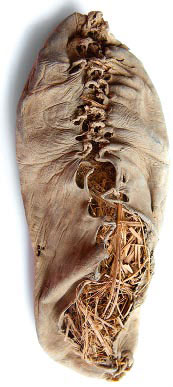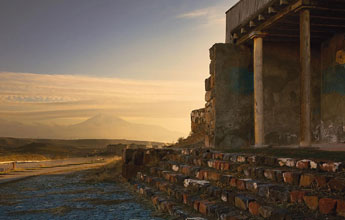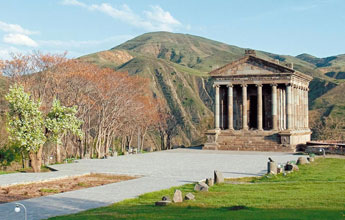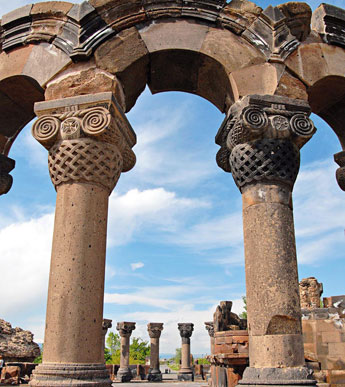Ancient and recent history

Armenia’s origins are colorfully illustrated in legend. One tells of Hayk, the great-great grandson of Noah, whose ark grounded on Mt. Ararat after the Great Flood. Ever since, Armenians have referred to their country as Hayastan. By the 9th century B.C. local tribes united in the state of Urartu, which grew in one of the most powerful kingdoms in the Middle East. Erebuni was one of the oldest cities in Urartu.


The year of Erebuni’s founding, 782 B.C. is also celebrated as the year of Yerevan’s birth. With nearly 2,800 years of history, Yerevan is one of the oldest continuously operating capitals in the world – 29 years older than Rome!In the 1st century B.C., Armenian territory grew to its largest extent under Tigran II’s reign. But war with Rome resulted in territorial loss, and by 387 A.D., Armenia was divided between the empires of Rome and Persia. The adoption of Christianity as a state religion in 301 A.D. and the creation of an Armenian alphabet in 405 A.D. were the chief milestones that helped Armenia to maintain its statehood and fortify its language and culture.
In 1991, ARMenIA pRoclAIMeD ITs InDepenDence. AT The enD of ThAT YeAR, The RepUBlIc of ARMenIA enTeReD The coMMonweAlTh of InDepenDenT sTATes (cIs).
These achievements saved Armenians from assimilation during this period, and in upcoming centuries from continuing efforts by other powers to dominate the country. In 1080, after the destruction of the Bagratid Kingdom, the Kingdom of Cilicia (Lesser Armenia) was established. The failed Third Crusade and other historical events left Armenia as the only signifcant Christian country in the region. Its location on the Mediterranean coast soon involved Cilician Armenia in international trade between the Western Asia and Europe. The Cilician Kingdom of Armenia prospered for nearly 300 years, and during this period, the Cilician Kingdom fnally assumed Armenian identity.
ARMenIAns weRe The fIRsT To AccepT chRIsTIAnITY As A sTATe RelIgIon In 301 AD
 The destruction of the Byzantine Empire led to another period of Armenia’s fragmentation and dependence that continued until the end of World War I. It was the disintegration of the Russian Empire that gave Armenians an opportunity for independence. In 1918, the independent Republic of Armenia was formed, only to be annexed by the Soviet Union in 1920.During World War II, Armenians fought alongside other Soviet nations against fascism. Of the more than 600,000 Armenians who struggled in the confict, approximately 200,000 died in battle. Armenia provided 60 generals and fve marshals to the Red Army. In addition, 108 Armenians were granted the title Hero of the Soviet Union, its highest award, for heroism and courage.As part of the Soviet Union, Armenia was transformed from a largely agricultural economy to an important scientifc and manufacturing center, focused on metalworking, machinery, chemical and light industry, production of food and beverages, as well as engineering, jewelry and production of construction materials production. Its industrial output was distributed to all Union republics. In return, Armenia received raw materials and energy. After nearly seventy years of Soviet domination, Armenia chose to embrace democratic ideals and political structure. In 1991, Armenia proclaimed its independence. At the end of that year, the Republic of Armenia entered the Commonwealth of Independent States (CIS). Since independence, the Republic of Armenia has pursued a policy of establishing friendly relations with all countries.
The destruction of the Byzantine Empire led to another period of Armenia’s fragmentation and dependence that continued until the end of World War I. It was the disintegration of the Russian Empire that gave Armenians an opportunity for independence. In 1918, the independent Republic of Armenia was formed, only to be annexed by the Soviet Union in 1920.During World War II, Armenians fought alongside other Soviet nations against fascism. Of the more than 600,000 Armenians who struggled in the confict, approximately 200,000 died in battle. Armenia provided 60 generals and fve marshals to the Red Army. In addition, 108 Armenians were granted the title Hero of the Soviet Union, its highest award, for heroism and courage.As part of the Soviet Union, Armenia was transformed from a largely agricultural economy to an important scientifc and manufacturing center, focused on metalworking, machinery, chemical and light industry, production of food and beverages, as well as engineering, jewelry and production of construction materials production. Its industrial output was distributed to all Union republics. In return, Armenia received raw materials and energy. After nearly seventy years of Soviet domination, Armenia chose to embrace democratic ideals and political structure. In 1991, Armenia proclaimed its independence. At the end of that year, the Republic of Armenia entered the Commonwealth of Independent States (CIS). Since independence, the Republic of Armenia has pursued a policy of establishing friendly relations with all countries.
































 Ancient and recent history
Ancient and recent history